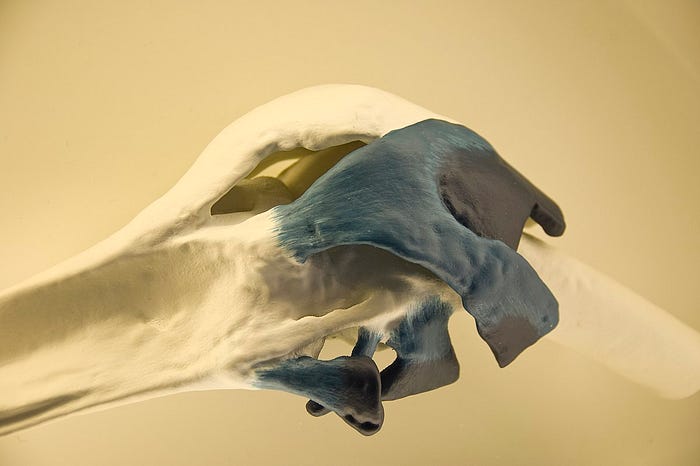The skeleton of a woman who suffered from a rare disease has been found. This is the result of a serious injury
Archaeologists have found the remains of a woman who lived in Portugal several hundred years ago. Scientists noticed that there was a huge bone growth on the femur. This is the result of extra-skeletal ossification, which was caused by a serious injury.
Researchers from the University of Lisbon have conducted a study of a female skeleton that was discovered in the town of Constância in central Portugal. The remains were discovered in the necropolis, which was located on the grounds of the São Julião Church. The bones were among 151 other dead.
Archaeologists estimated that they were buried between the 14th and 19th centuries AD. The researchers noted that a large bone growth of nearly 8 centimeters had formed in the upper part of the woman’s right thigh.
The deceased woman suffered from extraskeletal ossification
Analysis showed that this was the result of extraskeletal ossification. This is a condition that was first described in 1883. After World War I, it was very common among soldiers who returned from the front. It appeared in those who had suffered injuries to the musculoskeletal system, the spinal cord or the central spinal system. Extramedullary ossification is manifested by the formation of a focus of ossification in soft tissues.
“I have never seen so much ossification. This change was of great interest to us. The appearance of the femur suggests that it was a long-term process,” says Sandra Assis, an anthropologist at the University of Lisbon and lead author of the study. — Of course, we don’t have the woman’s medical records. But looking at similar clinical cases, we can conclude that this lesion in the femoral region was very debilitating,” Assis adds.
The growth formed between the upper part of the femur and the pubic bone
The researchers emphasize that the ossification developed where the muscle connected the inner part of the femur to the pubic bone. This means that the condition could have caused unimaginable pain and partial disability. The researchers believe that the lesion may have prevented the woman from moving freely. The findings were published in the scientific journal International Journal of Paleopathology.
In the article, the scholars point out that the extraskeletal ossification was the result of a single serious injury to the crest muscle, or was the result of multiple injuries the woman suffered in a short period of time. She was about 50 years old at the time of her death. The authors described the lesion as myositis ossificans traumatica. That is, traumatic ossificans myositis.
“This lesion is more common in adolescents and young adult males (e.g., athletes and physically active people). However, in the past, cases involving both sexes and different age groups have been described,” — researchers state.
The woman probably did manual labor
The woman’s skeleton was incomplete, but very well preserved. Based on analysis, the researchers concluded that she was about 154 cm tall. Detailed examination showed that the bone growth was probably formed a year before her death. Scientists stress that the ossification radically changed the woman’s previous life.
“Nowadays such a growth is removed surgically. At the time when the woman lived, this was impossible.” — Sandra Assis points out.
Scientists believe the mystery may be what the woman did for a living. The town of Constância was known for its port and economy based on the Tagus River since the Middle Ages. In the 19th century, women in the region were mainly engaged in housework, but also worked as weavers or seamstresses.
At the time, the hard physical labor, which was subject to serious injury, was mainly carried out by men. However, the researchers suggest that the woman may have been the exception that proves the rule. It is very possible that she worked alongside men, for example, in loading goods. Perhaps an unfortunate accident occurred in the course of her work that had far-reaching consequences.
Cool that you made it to the end of this article. I will be very pleased if you appreciate the effort of creating it and leave some claps here, or maybe even start following me. It would be nice if you also left a tip! Thank you!

